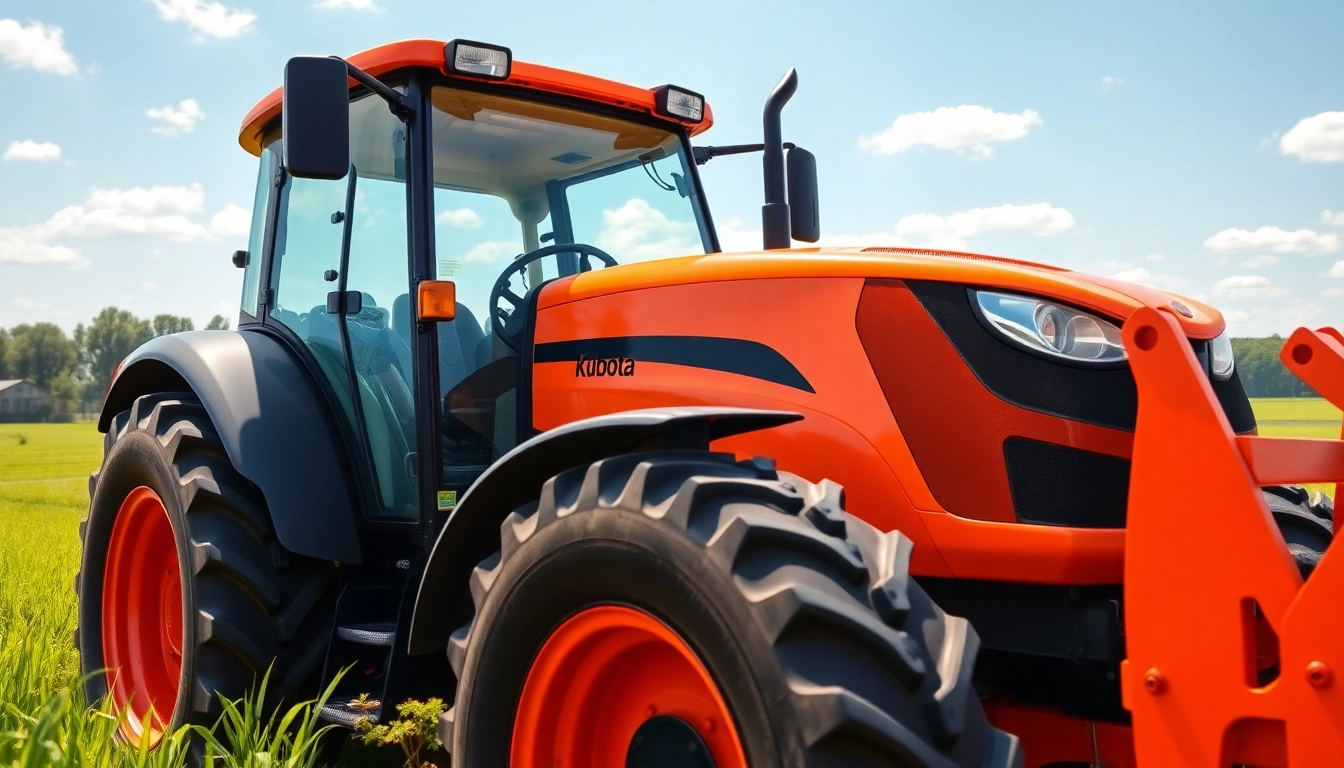Introduction to Pipe Stress Analysis
Pipe stress analysis is a crucial aspect of engineering, particularly in industries where pipelines are integral to operations, such as oil and gas, chemical processing, and power generation. This specialized study entails the examination of various forces acting on pipe systems to ensure structural integrity, safety, and operational efficiency. Understanding the fundamentals and applications of pipe stress analysis is vital for professionals looking to optimize pipeline systems. Engaging with a reliable pipe stress Analysis Company can significantly enhance the effectiveness of these evaluations and analyses.
What is Pipe Stress Analysis?
Pipe stress analysis involves evaluating the loads and stresses in piping systems caused by weight, pressure, thermal expansion, and other factors. The process ensures that the piping can withstand operational conditions without failure. This analysis typically includes the examination of various components such as supports, hangers, and braces to understand how they react under different stress scenarios. The ultimate goal is to ensure safety and serviceability while adhering to relevant codes and standards.
Importance of Pipe Stress Analysis for Industry
The significance of pipe stress analysis cannot be overstated. For industries relying on extensive piping systems, improper analysis can lead to catastrophic failures, resulting in costly downtime, safety hazards, and environmental disasters. A well-executed pipe stress analysis can help prevent issues such as:
- Pipe buckling or bending due to thermal expansion
- Fatigue failure from cyclic loading conditions
- Excessive vibration leading to erosion or fatigue
- Failure of supports and anchors due to improper design
Consequently, industries prioritize pipe stress analysis to maintain operational integrity, safeguard personnel, and comply with industry regulations.
Key Concepts in Pipe Stress Analysis
Before delving deeper into the methodologies and tools used for pipe stress analysis, it is essential to grasp some key concepts. These concepts include:
- Load Types: Various forces that act on pipes, including dead loads (weight of the pipe and contents), live loads (temporary loads), thermal loads (expansion due to temperature changes), and seismic loads (forces from earthquakes).
- Stress and Strain: Stress refers to the internal forces in materials, while strain represents the deformation of the material when subjected to stress.
- Support and Restraint: Understanding how pipes are supported or restrained throughout the system is crucial, as improper support can lead to significant stress concentrations.
Core Principles of Pipe Stress Analysis
Understanding Load Types and Effects
Load analysis is foundational in pipe stress assessment. It breaks down into three primary categories:
- Static Loads: These are loads that are constant and do not change over time, like the weight of pipes and fluids.
- Dynamic Loads: These loads vary rapidly, often resulting from operational changes, such as fluid flow changes or mechanical impacts.
- Impact Loads: Sudden loads that occur in brief durations, potentially caused by equipment starting up or shutting down.
Recognizing these load types helps engineers design more robust pipe systems capable of withstanding various operational scenarios.
Common Methods for Analysis
Several methodologies exist for performing pipe stress analysis, each suitable for different systems and complexities. Common methods include:
- Hand Calculations: Widely used for simple systems, using empirical formulas to calculate forces and moments.
- Finite Element Analysis (FEA): A computational approach that uses numerical methods to analyze complex pipe systems for stress, deformation, and dynamic response.
- Software Simulation: Utilizing specialized software to simulate load conditions and evaluate pipe performance under various scenarios, often incorporating FEA principles.
Understanding the strengths and weaknesses of each method is essential for selecting the most appropriate approach for a given project.
Software Tools Used in Pipe Stress Analysis
With advances in technology, various sophisticated software programs are available to streamline pipe stress analysis. Popular tools include:
- CAESAR II: A widely-used software for flexible pipe stress analysis, offering comprehensive features for modeling and assessing dynamic and static loads.
- AutoPIPE: Developed by Bentley Systems, this software supports both static and dynamic analysis, enabling complex simulations of piping systems.
- ANSYS: Known for its robust FEA capabilities, offering detailed insights into stress distribution and mechanical behavior.
Choosing the right software typically reflects project needs, including system complexity and analysis requirements.
Challenges in Pipe Stress Analysis
Identifying Common Pitfalls
Despite the importance of pipe stress analysis, several pitfalls can diminish its effectiveness. Common challenges include:
- Inadequate Load Definitions: Such as overlooking critical loads, which can lead to insufficient safety margins.
- Overreliance on Software: While software tools are powerful, they are limited by user input quality. Incorrect assumptions can significantly skew results.
- Failure to Consider Environmental Conditions: Not accounting for environmental effects like wind, seismic activity, or thermal fluctuations can lead to vulnerabilities.
By recognizing these pitfalls, engineers can adopt more effective approaches to avoid common missteps.
Environmental Factors Affecting Analysis
Environmental conditions greatly influence pipe stress analysis. These factors include:
- Temperature Extremes: Fluctuations in temperature can cause significant thermal expansion or contraction, affecting stress levels.
- Seismic Activity: Regions with high seismic risks require additional considerations in stress analysis to ensure pipeline stability.
- Wind and Weather: High winds or heavy snowfall can exert unusual loads on piping systems, necessitating adjustments in stress calculations.
Incorporating environmental factors into design is critical for enhancing resilience and safety.
Regulatory Requirements and Compliance Issues
Compliance with industry standards and regulations is paramount in pipe stress analysis. Various organizations set forth guidelines, such as:
- ASME (American Society of Mechanical Engineers): Their codes provide extensive directives on pipe stress analysis methodologies.
- B31.1 and B31.3 Codes: Covering power piping and process piping, respectively, these codes establish requirements for the design and analysis of piping systems.
- API (American Petroleum Institute): Provides standards specific to the oil and gas industry, ensuring a focus on safety and operational integrity.
Failing to follow these regulations can lead to legal ramifications, unsafe conditions, and equipment failure.
Best Practices for Effective Pipe Stress Analysis
Conducting Thorough Assessments
A meticulous assessment is foundational to effective pipe stress analysis. Engineers should follow comprehensive steps, which include:
- Data Collection: Gather accurate data regarding pipe materials, dimensions, operating conditions, and environmental influences.
- Load Identification: Clearly define all possible loads on the system, including those from operating procedures.
- Modeling: Develop accurate models using selected software to simulate real-world conditions precisely.
Following these practices ensures that each aspect of the analysis is carefully considered, leading to reliable results.
Implementing Advanced Analytical Techniques
With the evolving landscape of technology, engineers are adopting advanced techniques to enhance pipe stress analysis. Emerging methods include:
- Machine Learning Algorithms: Leveraging AI algorithms can help predict stress distributions more accurately based on historical data.
- Dynamic Analysis Techniques: Performing time-dependent analysis to assess transient conditions that traditional methods might overlook.
- 3D Modeling and Simulation: Utilizing multidimensional models for complex systems provides in-depth visualization that aids in recognizing stress concentrations.
Incorporating these advanced techniques can lead to more precise and comprehensive analyses.
Case Studies of Successful Analysis
Real-world applications of pipe stress analysis demonstrate its pivotal role in preventing failures and optimizing system performance. Consider the following case studies:
- Case Study 1: A natural gas processing facility faced significant downtime due to a pipe failure. By conducting a thorough stress analysis, the engineering team identified thermal expansion issues and redesigned the supports, ultimately reducing stress levels and increasing operational efficiency.
- Case Study 2: In a chemical plant, a routine pipe stress analysis revealed critical vibration points. By implementing damping technologies and redesigning support systems, the facility minimized fatigue risks, ensuring a safer working environment.
Such examples highlight the tangible benefits of effective pipe stress analysis.
Evaluating Performance in Pipe Stress Analysis
Metrics for Success in Pipe Stress Analysis
Evaluating the performance of pipe stress analysis involves a set of standardized metrics. Key metrics include:
- Reliability Index: Measures system reliability in terms of mean time between failures (MTBF).
- Cost Efficiency: Analyzing cost savings attained through effective stress analysis measures.
- Compliance Rate: Level of adherence to industry regulations and internal standards.
Regularly assessing these metrics enables continuous improvement in analysis methodologies and outcomes.
Continual Improvement Strategies
Engineers should adopt continual improvement strategies to enhance pipe stress analysis. These strategies may include:
- Feedback Loops: Collecting post-project feedback to ascertain areas for enhancement in analysis techniques.
- Training and Development: Ensuring teams remain proficient in the latest technologies and methodologies through ongoing training.
- Investing in New Technologies: Keeping pace with computational advancements allows for improved accuracy and efficiency in analyses.
Implementing these strategies fosters a culture of continuous enhancement and operational excellence.
Future Trends in Pipe Stress Analysis
As technology continues to advance, the field of pipe stress analysis is poised to evolve significantly. Key future trends may include:
- Integration of IoT: The Internet of Things (IoT) will allow real-time monitoring of pipe conditions, providing valuable data for proactive analysis.
- Increased Use of AI: AI will play a paramount role in predicting failure points and suggesting design modifications, leading to more intelligent systems.
- Enhanced Visualization Tools: Advanced visualization technologies will improve the way engineers understand stress distributions and system behavior.
Staying ahead of these emerging trends will be vital for engineering companies aiming to maintain a competitive edge in pipe stress analysis.



